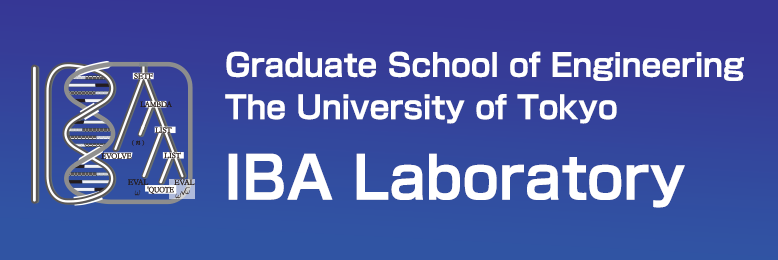Research
Evolutionary computation and emergence of intelligence
We study computational mechanisms with the keywords of "evolution" and "emergence of intelligence,” aiming at "Problem Solving from Nature," for the purpose of engineering optimization, learning and reasoning in AI.
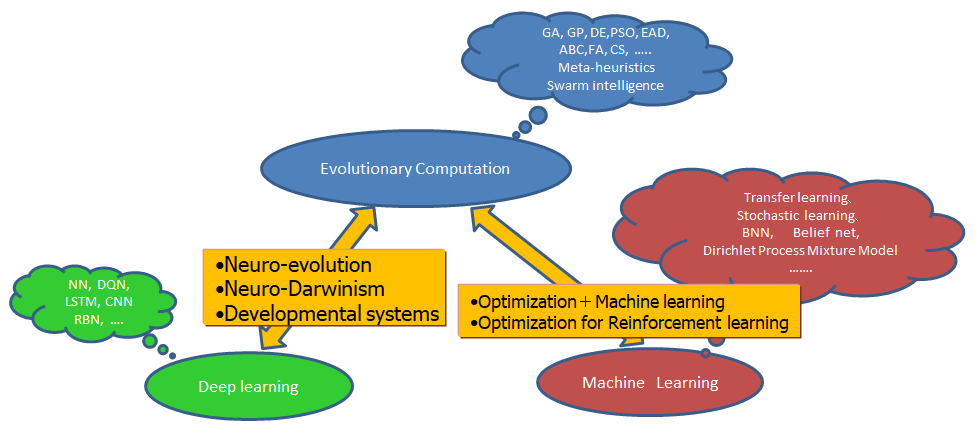
Research topic 1
Evolutionary computation and meta-heuristics

- Why are peacock feathers so beautiful?
- How did the giraffe's neck get so long?
- Why do worker bees serve the queen instead of producing their own young?
As we explore these mysteries, we find that we all solve certain optimization problems in the process of evolution and development. Based on this idea, methods aiming at "Problem Solving from Nature" are called metaheuristics. Typical examples are evolutionary computation and swarm intelligence. Metaheuristics are widely applied not only to engineering optimization, but also to financial engineering, art, and design. For example, the design of the N700 series bullet train and MRJ airplane wings are well-known examples. Recently, metaheuristics have been integrated with machine learning and deep learning, and widely applied to artificial intelligence learning, inference, automatic program synthesis, and design systems.
Research topic 2
LLM and metaheuristics
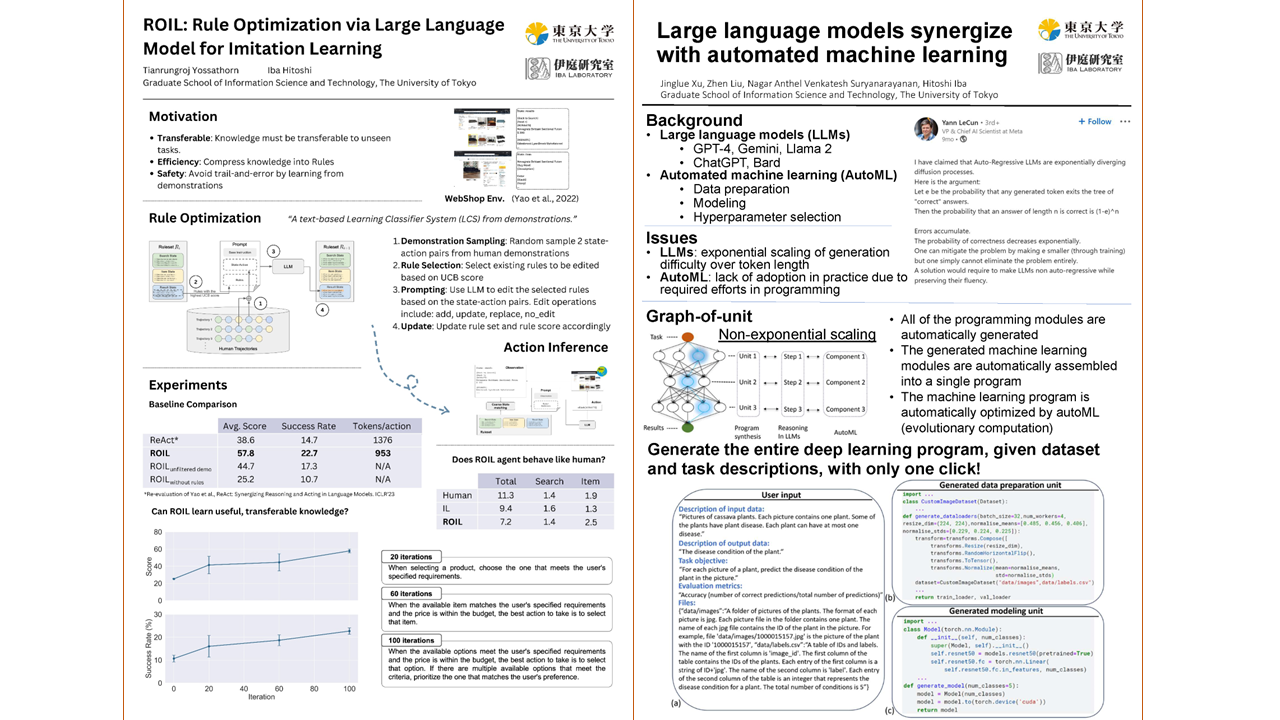
Large-scale language models (LLMs) are being actively used, but there is still much that is unknown about
their appropriate use.
For this reason, we are researching the following topics:
- Metaheuristics for LLM
- LLM for metaheuristics
Specifically, we aim to realize machine learning and automatic programming
using LLMs, and to generate effective prompts for LLMs using metaheuristics.
In addition, we are also studying how humans and LLMs have similar or different difficulties with logical
reasoning such
as syllogisms, how LLMs create hallucination about probabilistic thinking, and how LLMs process cognitive errors such as
"prospect theory." These studies aim to clarify how LLM contributes to the realization of "strong AI."
Research topic 3
Deep learning + Evolutionary computation = Deep neural evolution
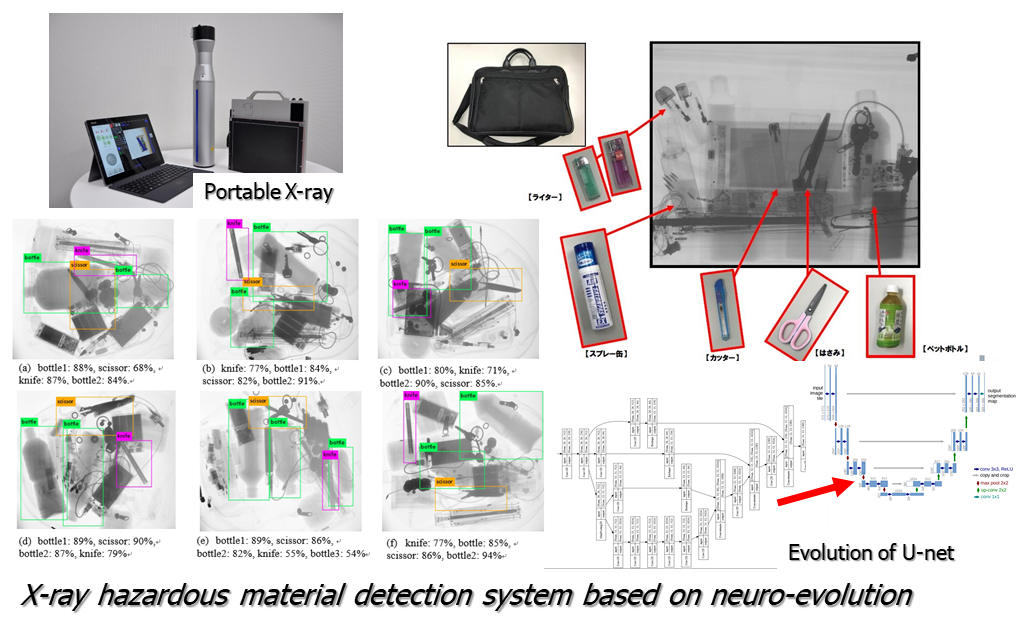
Neural Darwinism has been proposed by Gerald Edelman, who won the Nobel Prize in Physiology or Medicine in 1972. Deep neuroevolution is a framework that integrates deep learning and evolutionary computation. The key feature of neuroevolution is the genetic search for the optimal network and its learning parameters. This eliminates the time and effort required to search for a neural network (e.g., building a network through trial and error). Neuroevolution has been applied in various fields and its effectiveness has been confirmed
Research topic 4
Machine learning + evolution computation = smarter optimization
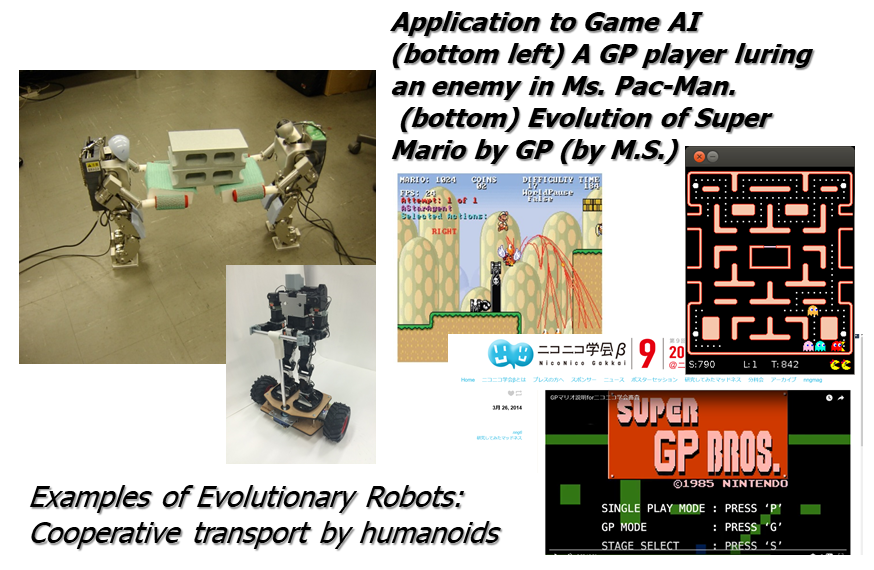
An optimization problem is the problem of minimizing or maximizing the value of an objective function. It appears frequently in physics, engineering, and many other fields. However, it is often difficult to solve analytically because the function to be optimized is very complex (not discontinuous or differentiable) or the specific form of the function is unknown. Many practical problems are computationally very expensive to evaluate solutions. Therefore, we aim to construct an algorithm that efficiently searches for a solution with a high evaluation value by integrating evolutionary computation and machine learning. For example, an approach that augments reinforcement learning with evolutionary computation has been applied to game AI and intelligent robots.
Research topic 5
Complex systems and artificial life
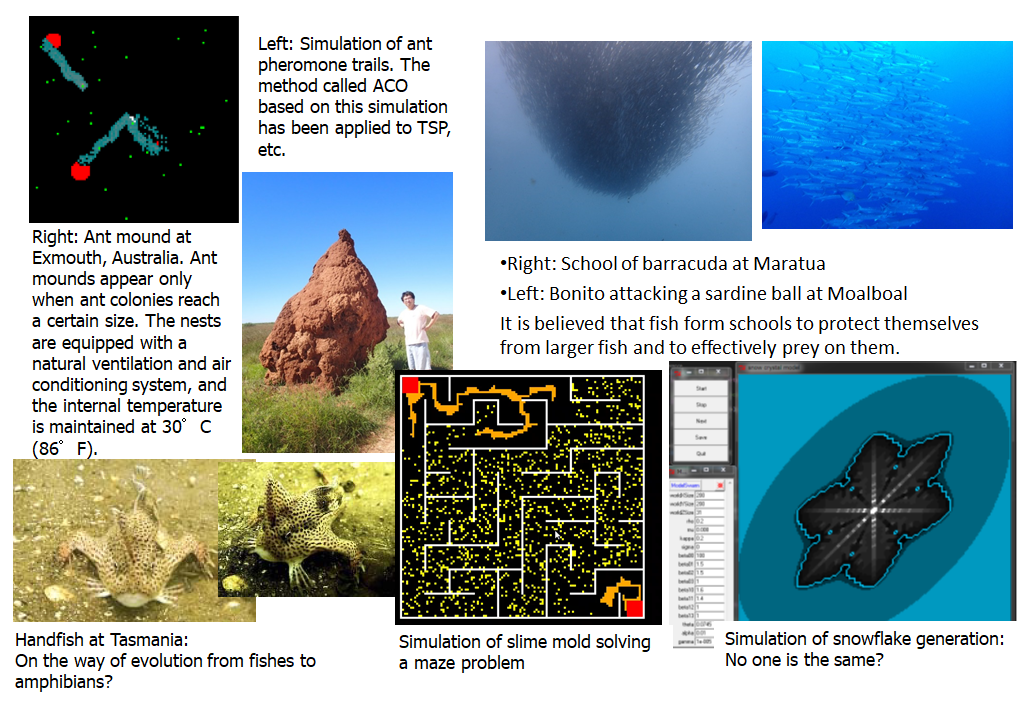
Researches on complex systems and artificial life are closely related to artificial intelligence. For example, swarm behavior of ants, bees, fish, and other organisms generates complex swarm intelligence that cannot be described by the behavior of individual ants, bees, or fish. Such swarm intelligence is called metaheuristics and has been applied in various fields of artificial intelligence. This research aims to integrate engineering and life sciences, and to realize key concepts of life phenomena, such as symbiosis, co-evolution and diversity.
Research topic 6
Mind Render:Practical researches on AI education
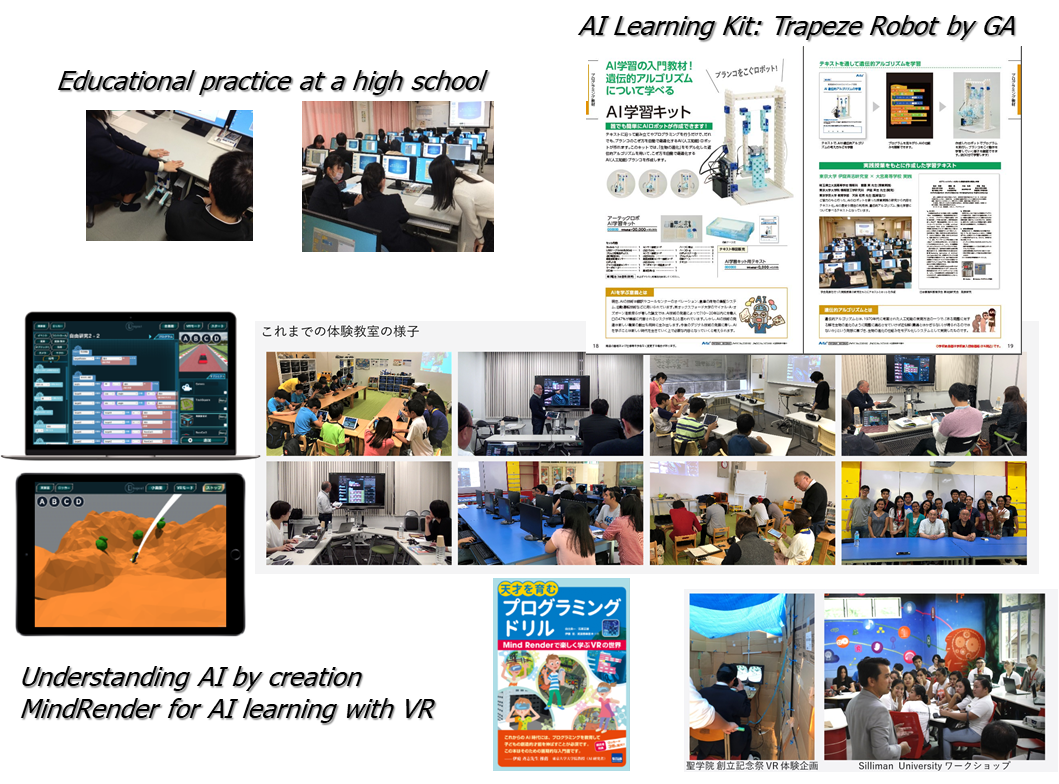
We conduct education and research to teach AI to beginners in an easy-to-understand manner. For example, we participated in an educational practice at a high school to conduct an empirical verification of the curriculum for an AI robot (actual equipment experiment). Mind Render is a programming learning application that allows users to create and play with VR programs, and is actually used in classes and for free research at several elementary and junior high schools and universities. We have developed AI learning drills using this app to provide richer opportunities for information education.
